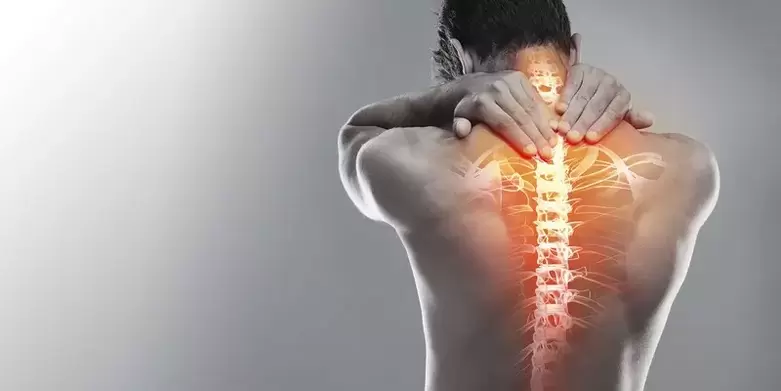Many people over the age of 35 (and some even before that) experience persistent back and neck pain. Also, the pain comes and goes and intensifies after many hours of sitting. The cause of these painful sensations is almost always osteochondrosis.
Osteochondrosis is negative (dystrophic) changes in the joints (or rather, articular cartilage) of the spine and intervertebral discs. Osteochondrosis occurs not only in the spine, but in this part of the body, the problem is more acute.

Symptoms - what's the main thing?
The main symptom of osteochondrosis is usually pain that comes and goes. Also, pain sensations increase with static load, for example, with a long head position in a bent state, neck pain increases. With prolonged session, low back pain arises. At the same time, gymnastics can provide some pain relief.
It is necessary to understand that similar pain can occur with inflammation, but in this case it passes quickly. In case of injury, recovery occurs within 3 months. If you have had regular back pain (neck, chest, lower back, sacral region) for a year or more, then you have a hernia in 99% of cases.
Osteochondrosis is a progressive disease, so if it is not treated in time, the pain will intensify. But the biggest risks are associated with the consequences of inaction on spinal treatment.
Pay attention to the following sensations to start immediate therapy:
Most of these signs are associated with compression of the neurovascular bundle. In this case, the compression can be localized in one place, and the pain and distorted sensations can be perceived remotely.

Reasons - why is it inevitable?
Osteochondrosis is, in simple terms, wear and tear on the spine. Spine disorders are mainly caused by your upright position and prolonged tension of the paravertebral muscles, which are tonic and relax only when stretched or under the therapeutic influence of specialized devices. Just sitting for more than 2 hours in front of a computer or in a car - this already leads to hypertonia of the intervertebral muscles of the lower back and neck. And after several years of a sedentary lifestyle, hernias appear in the neck and lower back. That's why it's important to start helping your spine after age 30! Before the spread of mass sedentary work, sturgeon disease worried people after 40 years. But now this disease is getting younger and starts to manifest from the age of 25 onwards.
In other words, the main reason for the appearance of osteochondrosis of the spine is muscle spasm. And in the treatment there must be, above all, a restorative work with the muscles.
How to treat? effective and cheap
Treatment of spinal osteochondrosis at home can be divided into 3 phases:
The easiest way to relieve acute pain is with medication. This is the most effective, but it is worth remembering that it is not a solution to the problem, but rather the elimination of the symptom.
In the 2nd and 3rd phases, to eliminate the causes of osteochondrosis and prevent its development, an innovative technology that has gained popularity in Europe can be used at home. It's based on self-gravity therapy. The therapy is based on the principle of safe action with one's own weight on the therapeutic tops of the devices. Developed by a team of scientists and physicians, the Cordus and Sacrus devices are anatomically designed, whose therapeutic protrusions are able to sink into the intervertebral muscles or deep ligaments and relieve tension. No other technology to date can do this with such precision and security.
Running the procedure. To perform therapy, you need to pick up the device, lie down on a rug or sports rug, and place the device under the desired area of the spine. The duration of the study of a segment is, on average, about 3 minutes. During this time, the tense muscle or ligament relaxes under the action of the device. Due to the effect on the main cause of osteochondrosis - muscle spasm - this method is the safest and most effective.

There are 3 processes going on at the same time:
Even if the pain is located in one area, therapy should be given to all three parts of the spine. For example, pain in the lower back may arise from spasms in the sacrum or neck and vice versa.
After unloading the spine, using the device according to the method developed, exercises are performed to stabilize the spine and strengthen the muscular corset, which guarantees the consolidation of the results achieved.























